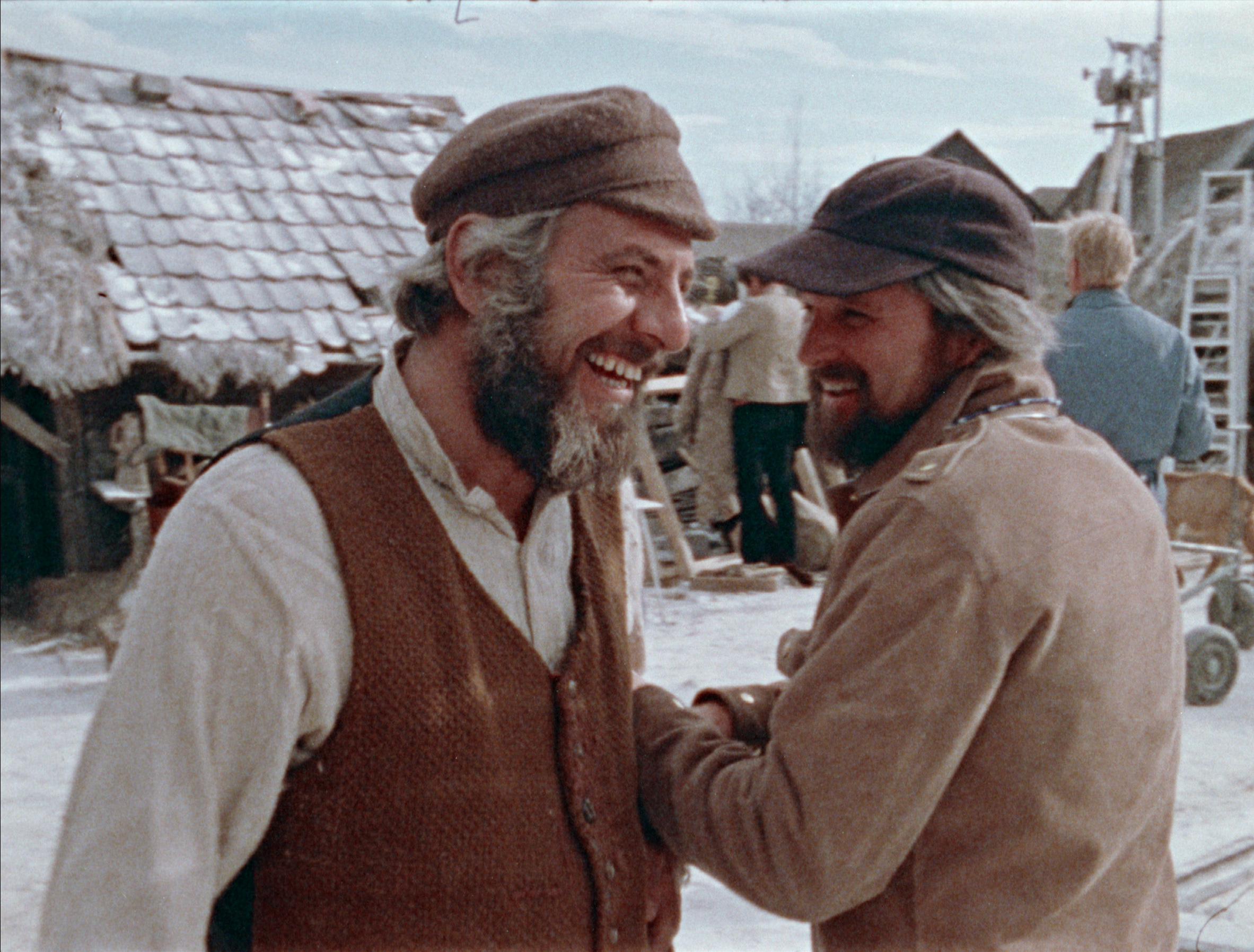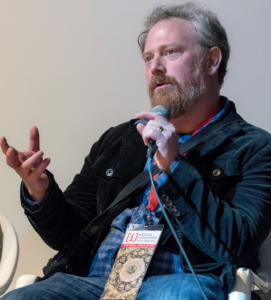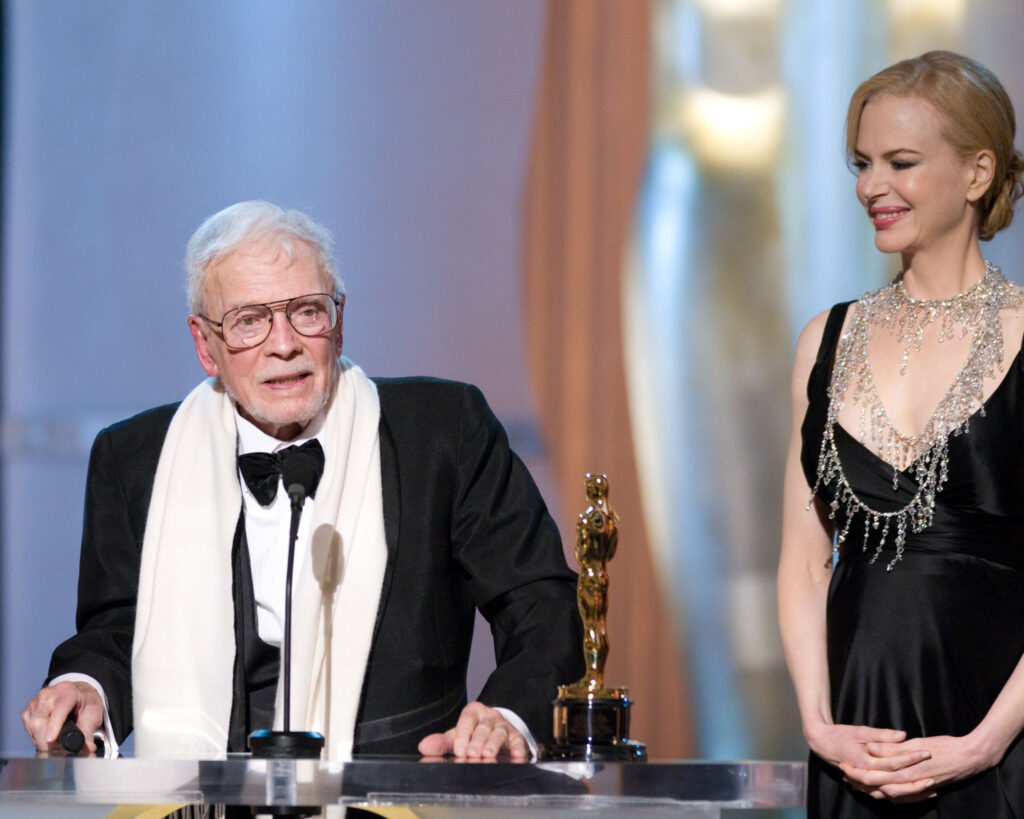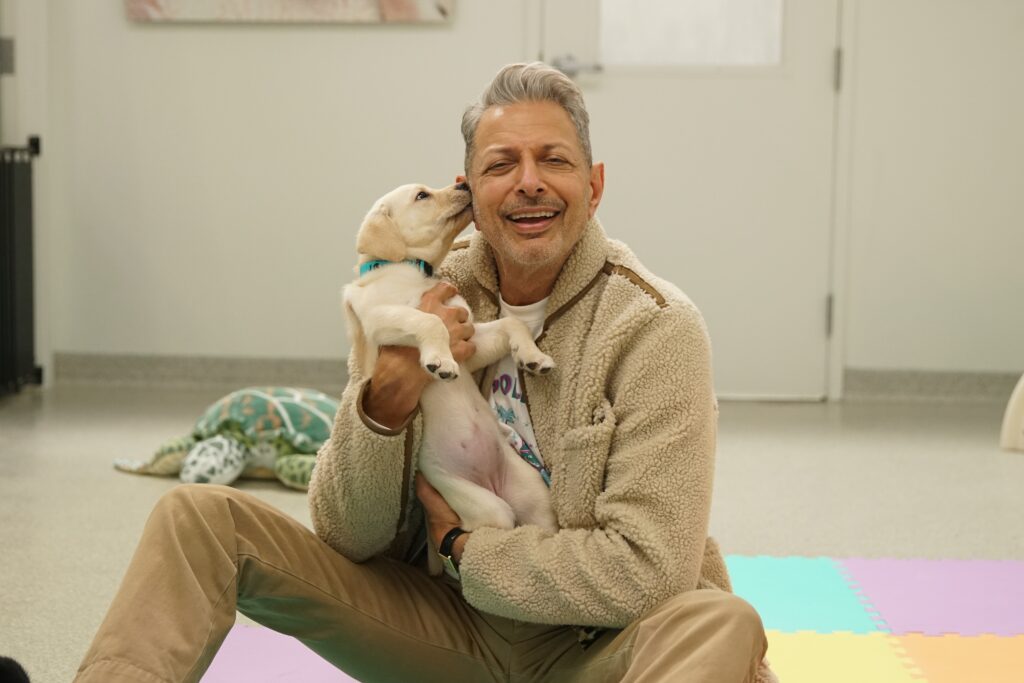
Daniel Raim spoke with Solzy at the Movies about the new documentary playing in theaters, Fiddler’s Journey to the Big Screen.
Zeitgeist Films released Fiddler’s Journey to the Big Screen in select theaters starting on April 29. Starting on May 6, the film expands to a number of theaters across the country.

This film has been over a decade in the making. When did you first decide you wanted to make a documentary about Fiddler on the Roof?
Daniel Raim: It was really when I saw Topol’s farewell tour in 2009. That was the first time I saw the play and I saw the play surrounded by an audience made up of people of varying ethnic backgrounds. The audience was singing and jumping to their feet and embracing the songs in the story as powerfully as I had when I saw the movie for the first time when I was 13. I think making this documentary is in a way in an unconscious response to seeing the film for the first time when I was 13 in my grandparents’ home in Haifa, Israel. I had never seen Fiddler on the Roof and never heard the music prior to that time. I was immediately absorbed. They came from Eastern Europe. I was very curious, even at the age of 13, about Jewish history, my family’s history. As I’m watching Fiddler on the Roof, to the left of the TV is a portrait of my great-grandparents who died in the Holocaust. All of that kind of churning together became the source of inspiration and curiosity.
Another big turning point was in 1997. I had joined the American Film Institute as a student and my professor was production designer Robert Boyle, who had designed Fiddler on the Roof, in addition to many Hitchcock classics, and he was the subject of my first documentary, The Man on Lincoln’s Nose, which investigates the making of Fiddler on the Roof. Twenty-two (22) years ago, by interviewing Robert Boyle and Norman Jewison, I was already learning and documenting their creative journey in making Fiddler on the Roof, finding the locations, traveling throughout Eastern Europe.
The other important milestone is in 2015 – Norman Jewison published his autobiography, This Terrible Business Has Been Good to Me. In reading it, I was once again curious to learn more about his journey, especially having read that he found himself in making Fiddler on the Roof. When I interviewed him shortly after that—it’s interesting now that we’re speaking, I’m thinking out loud that each interview I’ve done over the 10 years has been a reaction to something without really being clear at that moment what I’m going to do with it. I meet Robert Boyle and make a movie about him. I see Topol’s farewell tour. I interviewed him in depth a few months later at his home in Tel Aviv, about both the play and the film, because he started in London and then was discovered by Norman during the last night at the West End and then cast that night. And then reading Norman’s autobiography—I’m piecing all these pieces of the puzzle together—shortly after reading Norman Jewison’s autobiography, I interviewed him at his home. Two hours sit down, in-depth, locked in a discussion of both his process and his vision for Fiddler on the Roof and the life experiences he had starting in his early childhood that informed his creative vision and informed who he is as a person. Those are all the things that that sort of moved me to investigate the story on a deeper level.
If you never enrolled at the American Film Institute, there’s a good chance we would not be talking on Zoom today.
Daniel Raim: That’s a great question. 100%. I think a lot of it is subconscious. We’re talking today after the fact. I’ve made the film and now we can meditate on who, what, when, where, why, and how did this come about? But I think you’re absolutely right. But I think it all comes back to the movie that had such a profound impact on me at the age of 13. Over the course of my life, the movie—for better or worse—became a kind of a reflection of questioning what does it mean to be Jewish? Where do I find myself in my own Jewish experience and Jewish journey? I even spoke in-depth about some of these questions with Topol, Sheldon Harnick, and others. I found it to be quite meaningful.
I’ve seen North by Northwest a few times and it is my favorite Alfred Hitchcock film. You look at the production design in Fiddler on the Roof and it’s not even anywhere close to being the same genre. It’s such a beautiful production design—recreating the shtetls that no longer exist.
Daniel Raim: That’s right—two very different directors at the helm with two very different visions. Hitchcock wanted Boyle to recreate Mount Rushmore on a Hollywood soundstage. Another director of Fiddler on the Roof may have wanted Robert Boyle to recreate Anatevka on a Hollywood soundstage. Jewison wanted to create Anatevka in Russia or as close as they could get to Russia. And then in the story, the shtetl of Anatevka is near Boyarka, just outside of Kyiv. My thought is that Robert Boyle, cinematographer Oswald Morris and the costume designers and the researchers did such a fabulous job recreating this real life shtetl that when we see the exodus at the end of the film, our heart breaks even more because we feel like we’ve been there.

What was the biggest thing you learned from Robert Boyle?
Daniel Raim: As a teacher, there are two things. One is production design is not about building walls and sets and creating a place for the characters to move within. That’s very technical. A production designer is a co-storyteller and what’s most important, from his point of view, is the human values. Who are these people? What do they do? Having a three-dimensional understanding of these characters in order to humanize them and create a world that they can live inside that is also cinematically rich in that it has a dramatic cinematic value in terms of how do we move the camera in that space to reflect the emotions and inner life of the characters. He touches on that in Fiddler on the Roof, creating a shtetl where we can have a whole community come together and he touches on the fact that he and Norman Jewison saw eye to eye as collaborators in terms of who are these characters. Both Robert Boyle and Norman Jewison told me that Fiddler on the Roof was their favorite movie to work on. I think that they created these rich organic lives and a rich organic community so he certainly walked the talk, Robert Boyle. But again, I think if I would summarize in one sentence, it’s the human values and the importance of collaboration. How do different department heads work together to create something? On a Hitchcock film like North by Northwest, you have cinematographer Robert Burks and production designer Robert Boyle working in collaboration with Hitchcock and the screenwriter and the costume designer. They all were in a room together, thinking it through in a very intimate, practical level. Same with Jewison’s production. Their collaboration became a big part of what Fiddler’s Journey to the Big Screen is about.
What was the most challenging aspect of making the documentary?
Daniel Raim: Well, I had so much rich material from all the interviews I conducted and the challenge was to have the discipline to narrow it down to one idea, one story. I was working with a very small team, producer Sasha Berman, co-writer Michael Sragow. It wasn’t that we were just going to look at the movie but I was very interested in finding out what is that narrative dramatic thread to help us understand Norman Jewison’s inner journey, which he told me at the end of the two hour interview, “I found myself making Fiddler on the Roof” and then he was done with the interview. He just ended the interview on that. I thought that’s now my challenge to find that journey. What does that mean? How does it connect to his identity? It doesn’t have to even be Jewish identity, although for him, he certainly was asking the question, “Where do I belong?” Because of his last name, he thought he was Jewish when he was six. He was bullied—he experienced antisemitism in the schoolyard. But I think beyond that, something moved him deeply that touched his soul. Circling back and being able to make Fiddler on the Roof was very meaningful. I think being able to devise that into a narrative was quite a challenge.
What was the one thing that surprised you the most over the course of the interviews?
Daniel Raim: What surprised me the most was the collective story of the three actresses who played Tevye’s eldest daughters, Tzeitel, Hodel, and Chava. Rosalind Harris, Neva Small and Michele Marsh, having interviewed them, I was so moved to meet them and to talk about what the experience of making that movie meant to them. What surprised me was just how deeply-felt their performances were, that Norman Jewison could help elicit a casting. How relevant that was to what makes Fiddler on the Roof such a timeless masterpiece, and their collective humanness that they brought to it. How they savor so beautifully that experience, I think, that’s pretty unique. I was very moved to see their collective story kind of rising in the edit into something that became more prominent in the film.
How long was the initial cut?
Daniel Raim: Probably like two and a half hours. Certainly, there were all sorts of exploration, other characters you haven’t met, other ideas. Having started making this in 2009, I was interested in and talking with Shalem Aleichem scholars. In 2011, a terrific documentary came out called Shalem Aleichem: Laughing in the Darkness. In 2019, another film came out, which I’m sure you saw, Fiddler: A Miracle of Miracles. Both beautiful films that kind of liberated me in a way, having covered some of the same territory, to really dial in and focus on what Bob Boyle talked about is the human story. That’s what I think is really interesting to pan my gaze away from just the movie and onto the humanity of the artists and their experiences making the film.
Can we see additional footage on the home release?
Daniel Raim: Absolutely.
Do you have a favorite song from the musical?
Daniel Raim: Gosh, favorite song. (Laughs) “Anatevka,” I find so moving whenever I see that scene and the way Norman Jewison dramatized and visualized that song, just so beautiful. “Sabbath Prayer,” also with the family around the table, definitely reminds me of certain experiences I had growing up. Those are two standouts for me.

How did you go about deciding on Jeff Goldblum as the narrator?
Daniel Raim: It was an instinct but what informed and inspired my decision was the fact that the same week that I was contemplating who to ask to narrate, he had spontaneously sang “Sunrise, Sunset” for a couple getting married in a park in Brooklyn. I thought, this is an artist who I respect and admire and who clearly loves Fiddler on the Roof. It was such a pleasure to work with Jeff Goldblum. I think he really captured the essence of what we were trying to express in particular scenes, like the discussion of the painted shul and other elements. I think he did a fabulous job.
Did he need much direction?
Daniel Raim: He’s a musical person. I thought I’d communicate to him through that realm. I would invite him to listen to the music that my composer, Dave Lebolt, had written for that specific scene he’s going to narrate. I said, I’m just going to play this track for you. This is going to be against what you’re narrating. I think he immediately understood what we’re going for at that moment.
What do you hope people take away from watching the film?
Daniel Raim: My hope is that Fiddler’s Journey to the Big Screen contributes to the legacy of Norman Jewison film by paying tribute to the cinema artists that work behind the scenes and made a movie that was born out of their hearts and souls. I hope that audiences come to appreciate the tactile blood, sweat, and tears that goes into creating a movie. It has a mythology and a mystique it, and it puts a spell on us, right? My goal is not to break the spell. My goal is to help the audience appreciate on a deeper level why and how Fiddler on the Roof casts such a beautiful spell on us when we see it.
Fiddler’s Journey to the Big Screen is now playing in theaters.
Please subscribe to Solzy at the Movies on Substack.







